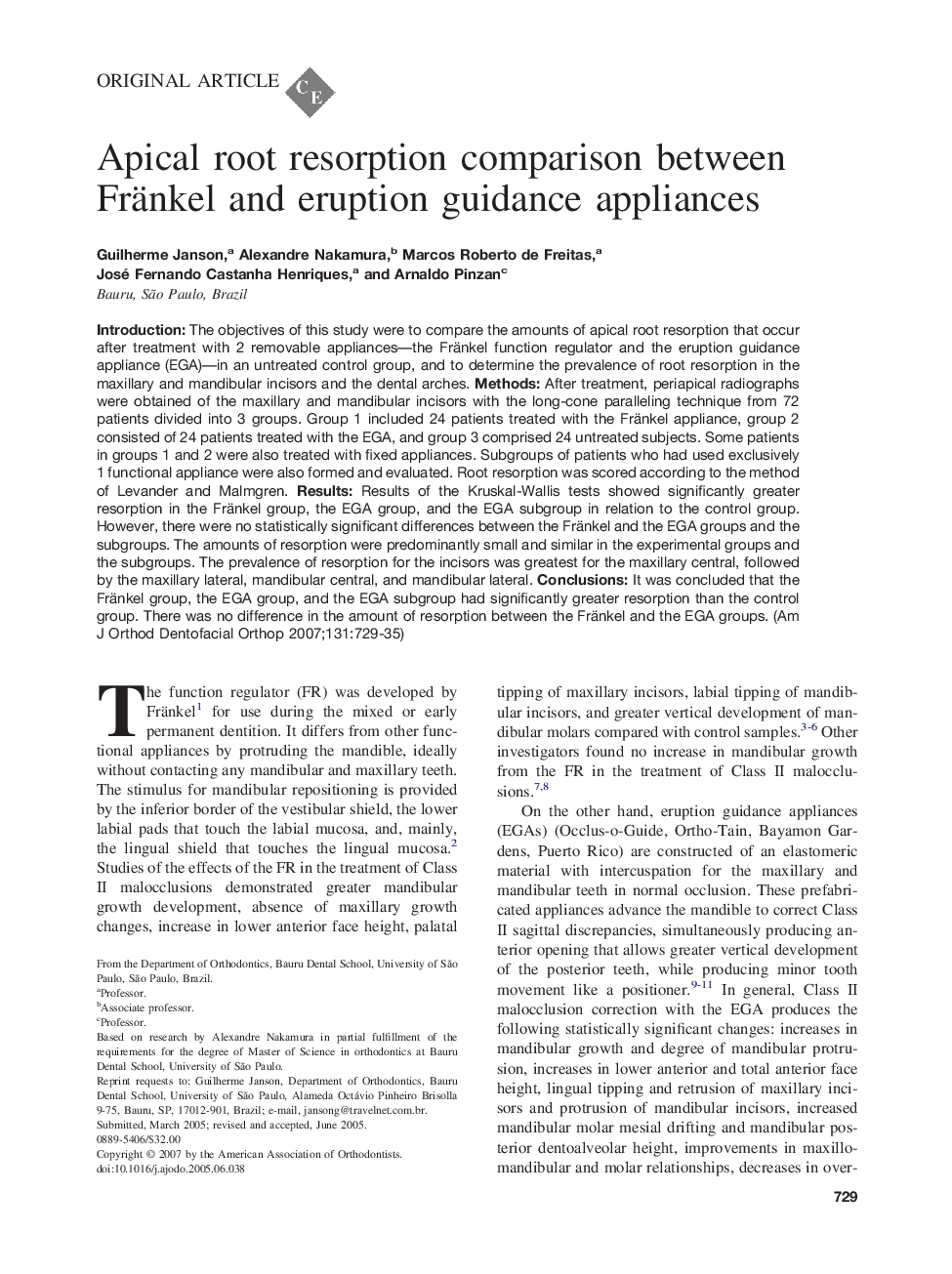| Article ID | Journal | Published Year | Pages | File Type |
|---|---|---|---|---|
| 3120409 | American Journal of Orthodontics and Dentofacial Orthopedics | 2007 | 7 Pages |
Introduction: The objectives of this study were to compare the amounts of apical root resorption that occur after treatment with 2 removable appliances—the Fränkel function regulator and the eruption guidance appliance (EGA)—in an untreated control group, and to determine the prevalence of root resorption in the maxillary and mandibular incisors and the dental arches. Methods: After treatment, periapical radiographs were obtained of the maxillary and mandibular incisors with the long-cone paralleling technique from 72 patients divided into 3 groups. Group 1 included 24 patients treated with the Fränkel appliance, group 2 consisted of 24 patients treated with the EGA, and group 3 comprised 24 untreated subjects. Some patients in groups 1 and 2 were also treated with fixed appliances. Subgroups of patients who had used exclusively 1 functional appliance were also formed and evaluated. Root resorption was scored according to the method of Levander and Malmgren. Results: Results of the Kruskal-Wallis tests showed significantly greater resorption in the Fränkel group, the EGA group, and the EGA subgroup in relation to the control group. However, there were no statistically significant differences between the Fränkel and the EGA groups and the subgroups. The amounts of resorption were predominantly small and similar in the experimental groups and the subgroups. The prevalence of resorption for the incisors was greatest for the maxillary central, followed by the maxillary lateral, mandibular central, and mandibular lateral. Conclusions: It was concluded that the Fränkel group, the EGA group, and the EGA subgroup had significantly greater resorption than the control group. There was no difference in the amount of resorption between the Fränkel and the EGA groups.
